Are you facing the issue of lack of sharpness in your image, even after using a tripod? Then this article is for you. Here, I will go through the mirror lockup feature of a DSLR camera in detail. Let us see how it can help to capture tack sharp images.
What is Mirror Lockup?
Before going through the Mirror lockup feature, it is better to understand where this Mirror comes in a DSLR camera.
Starting from the front, we have Aperture, followed by the Mirror, shutter and the camera sensor.
So, when you press the shutter button in a DSLR camera, the Mirror flips up at first. It is followed by the shutter opening for the specific shutter speed, and the camera sensor gets exposed to the incoming light rays, and the image gets recorded in the memory. The Mirror returns to its initial position once the shutter is closed. It is how the mirror mechanism works in a DSLR camera.
Mirror Lockup is the technique used by DSLR camera to hold the Mirror in the flipped-up state permanently. This set up allows the incident light to fall on the camera sensor once the shutter is opened. So, there won’t be any flipping of Mirror in the process.
Once you enable this option in your DSLR camera, then you will not be able to see the scene through the viewfinder. You are disabling the mirror feature in the DSLR camera completely.
Factors Affecting Image Sharpness
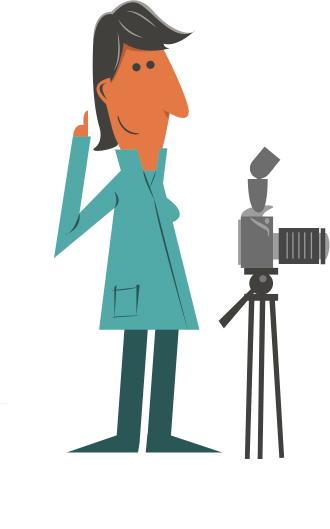
Now, you know, how the mirror system works inside a DSLR camera.
When you are doing photography, three things can affect image sharpness. They are:
1. The Photographer himself
It is mainly due to the wrong camera holding technique or because of slow shutter speed. Use a tripod and a remote trigger release for the camera to capture the picture. You can even make use of the 10 second or 2-second timer in the camera.
2. Wind Factor
The wind is never under your control. But, still, you can eliminate the wind factor also to an extent, by waiting for the wind to stop. You can even make use of the counterbalance technique by adding a sandbag to your tripod set up to nullify the wind factor. It is only useful for gentle winds.
3. Due to Camera Mechanics
When it comes to the third factor, the camera mechanics, you should know the source of vibration to correct it.
Inside the camera, two things mainly attribute to the vibration. They are the flipping of the Mirror and the opening of the shutter. Closing of the shutter doesn’t have any effect since the image is already recorded on to the camera sensor.
Among these two factors, the more prominent one is the mirror flip.
So, once you take care of this, then you can completely remove the vibrations inside the camera that attributes to lack of image sharpness.
How to Test the Mirror Shake in a DSLR Camera?
Let us feel the shake caused by the mirror flip in a DSLR camera. You don’t need any high-end equipment to test this shake. You need a drop of water for this test. Am I Kidding? Did I say a drop of water? Yes, it is true.
Mount the camera on a tripod. Once your setup is ready, place a drop of water on the hot shoe of the camera. Ideally, it should be on the metal part of the hot shoe, then only you can see the effect of the shake. Use a camera trigger or the inbuilt camera timer for triggering the shot.
Keep your eyes on the water droplet when the shutter gets activated. You can see ripples on the water droplet, which indicates that there is some amount of shake on the camera body even if we use the remote trigger for the shot. This shake will have an adverse effect on your image sharpness, especially when you are using slower shutter speeds or for long exposure photography.
How to Enable Mirror Lockup Feature in DSLR Camera?
All DSLR cameras come with an option called “Mirror Lockup” in the menu settings. So, whenever you are using a tripod for your photography, make sure that you enable the Mirror Lockup feature in your DSLR camera to get tack sharp images.
Mirror Lockup on a Canon Camera
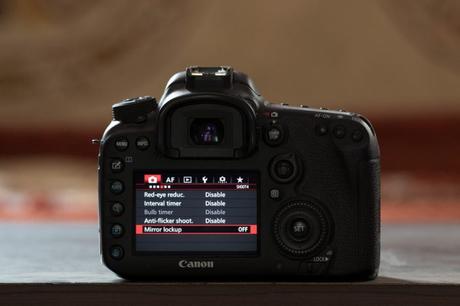
I will show you how to enable this feature on a Canon camera, Canon 7D Mark II. Press the menu button and go to the fourth window under the first camera icon in the settings menu. You can find the “Mirror Lockup” option at last. It would be “OFF” by default.
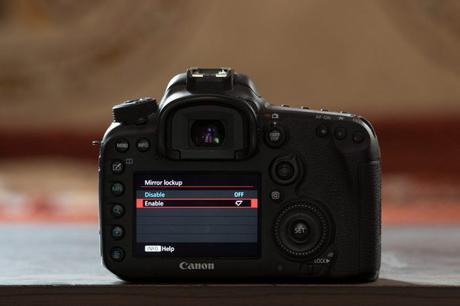
Press this option, and a new window will open up, which shows the option to enable and disable the mirror lockup feature.
Mirror Lock Up Feature Test
Now, I will test the mirror lockup feature using a Canon 1DX Mark II camera with a Canon 70-200 mm f4 L IS II USM Lens.
This camera setup is mounted on a Manfrotto Tripod and 2-second timer is used to trigger the shot.
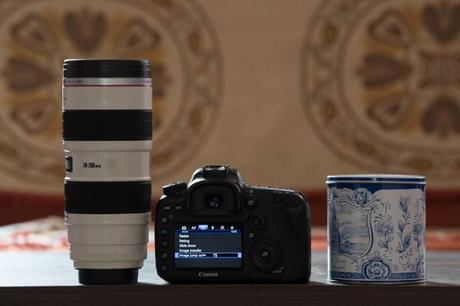
First, let me capture an image with the “Mirror Lockup” feature disabled. The above image is taken in Aperture priority mode with settings of f/6.3, 1/13 seconds, 800 ISO. So, slower shutter speed is used to see the difference.
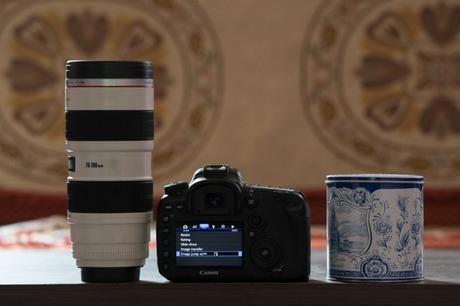
Now, Let me enable the Mirror Lockup feature and capture the same scene using the same Exposure settings. I can hear the mirror getting flipped after the 2-second inbuilt camera timer. It takes around 3-4 second after this flip to activate the shutter. This delay ensures that the entire set up is steady before the capture.
The first and second image looks almost the same since it is a bigger image displayed on a smaller screen. So, I will zoom in the image to 100% and take a cropped section from both the images.
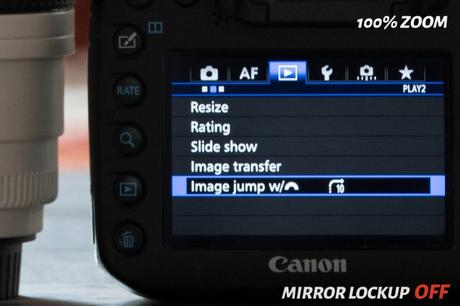
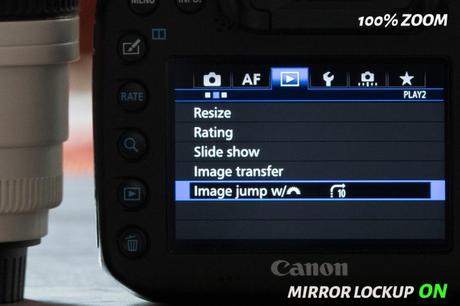
The shake due to camera flip has resulted in a less sharp image. If you notice the edges of the camera and the lens mug, the edges are soft, when compared to one taken with “Mirror Lockup” enabled.
Even the writings on display and the buttons are not sharp on the image without the Mirror Lockup.
So, it is quite clear that the flipping of the mirror has got a real impact on the sharpness of the picture.
Conclusion
Now, you know, how Mirror Lockup technique can help you to get tack sharp images. So, make use of this technique whenever you use a tripod for your photography. Try to eliminate all possible sources of shaky images.

